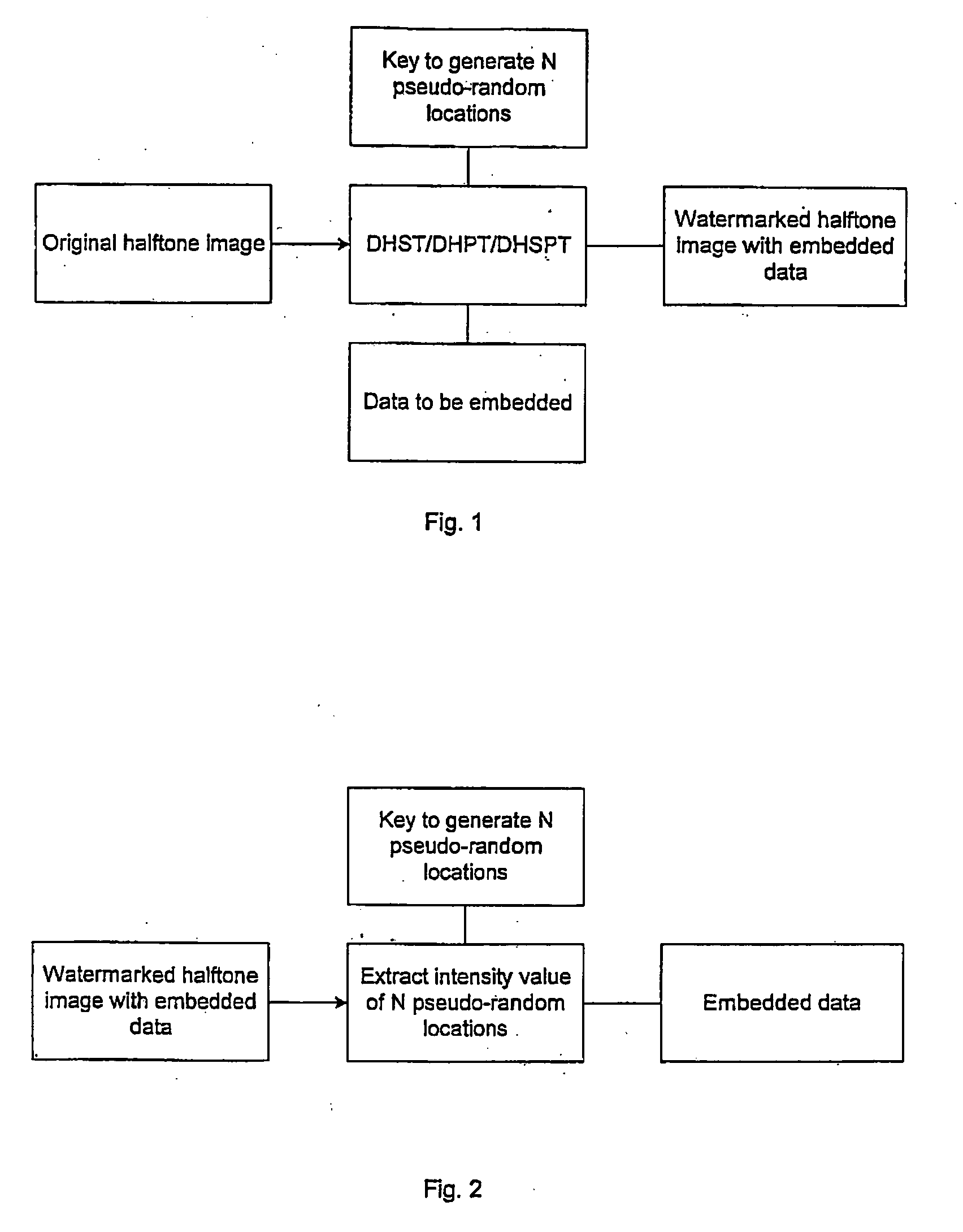Methods and apparatus for hiding data in halftone images
a halftone image and data technology, applied in the field of methods and apparatus for producing a halftone image, can solve the problems of “robustness” of watermarking, how hard it is for a third party to remove the watermark, and few, if any, known watermarking algorithms can be applied, so as to preserve the local average intensity
- Summary
- Abstract
- Description
- Claims
- Application Information
AI Technical Summary
Benefits of technology
Problems solved by technology
Method used
Image
Examples
Embodiment Construction
1. Data Hiding Without the Original Multi-Tone Image
[0049] In this section, we focus on the situation in which a first halftone image is available, but both the original multi-tone image from which it was produced and the halftoning method used to produce it are not known. In this situation, we can only hide data in the halftone image by modifying it in such a way that the visual quality is least degraded. For this problem, we will propose the Data Hiding Smart Pair Toggling (DHSPT). To introduce DHSPT, we will mention two other new intermediate algorithms, the Data Hiding Self Toggling (DHST) and Data Hiding Pair Toggling (DHPT). We will point out that DHST is simple but has major visual artifacts due to the self-toggling and the resulting undesirable local pixel intensity change. The DHPT improves on DHST by using complementary pair toggling instead of self-toggling so as to preserve the local average pixel intensity. However, DHPT still has some significant artifacts due to the...
PUM
 Login to View More
Login to View More Abstract
Description
Claims
Application Information
 Login to View More
Login to View More - R&D
- Intellectual Property
- Life Sciences
- Materials
- Tech Scout
- Unparalleled Data Quality
- Higher Quality Content
- 60% Fewer Hallucinations
Browse by: Latest US Patents, China's latest patents, Technical Efficacy Thesaurus, Application Domain, Technology Topic, Popular Technical Reports.
© 2025 PatSnap. All rights reserved.Legal|Privacy policy|Modern Slavery Act Transparency Statement|Sitemap|About US| Contact US: help@patsnap.com



